The Via Francigena Part 14 route map |
Aquapendente ~ Bolsena ~ Montefiascone ~ Viterbo ~ Sutri ~ Formello |
Distance: 144km (2,038/1,900km) |
S l o w time: 7 days |
Tufa stone villages | Volcanic crater lakes |Original Roman road |Thermal springs |
If you know one thing about the Italian region of Lazio, it’s this: it’s got Rome. The massive pull of Italy’s capital absolutely dominates for visitors (us included – we were attempting to walk there, for God’s sake). But the presence of the almighty Roma means that people don’t seem to know much about Lazio itself, or what else is there.
As usual, we didn’t either. But as we neared the end of our walk to Rome on the Via Francigena, we worked our way right through it. And discovered a land all of itself.
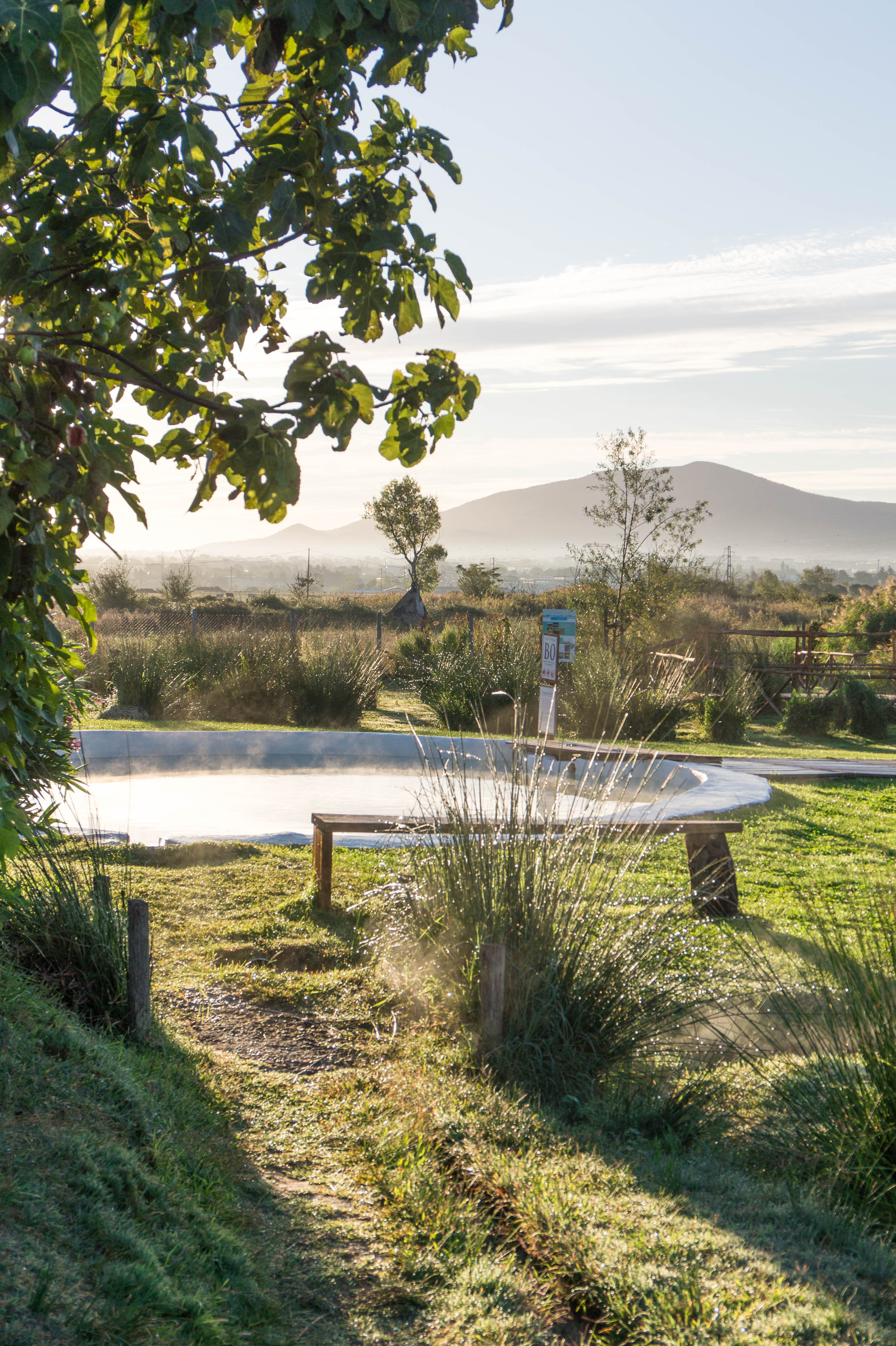
We walked volcanoes, lakes, natural thermal springs, hazelnut groves, and volcanic villages that seem a thousand miles away from the crush and buzz of the Roman city.
Lazio is a fascinating and beautiful place.
Our first stop after the hills of Tuscany was the Lazio town of Acquapendente, and it was starkly different from the golden tones of the Val d’Orcia. The tall streets were built from a dark volcanic rock called tufa, bubbling with holes and craters.
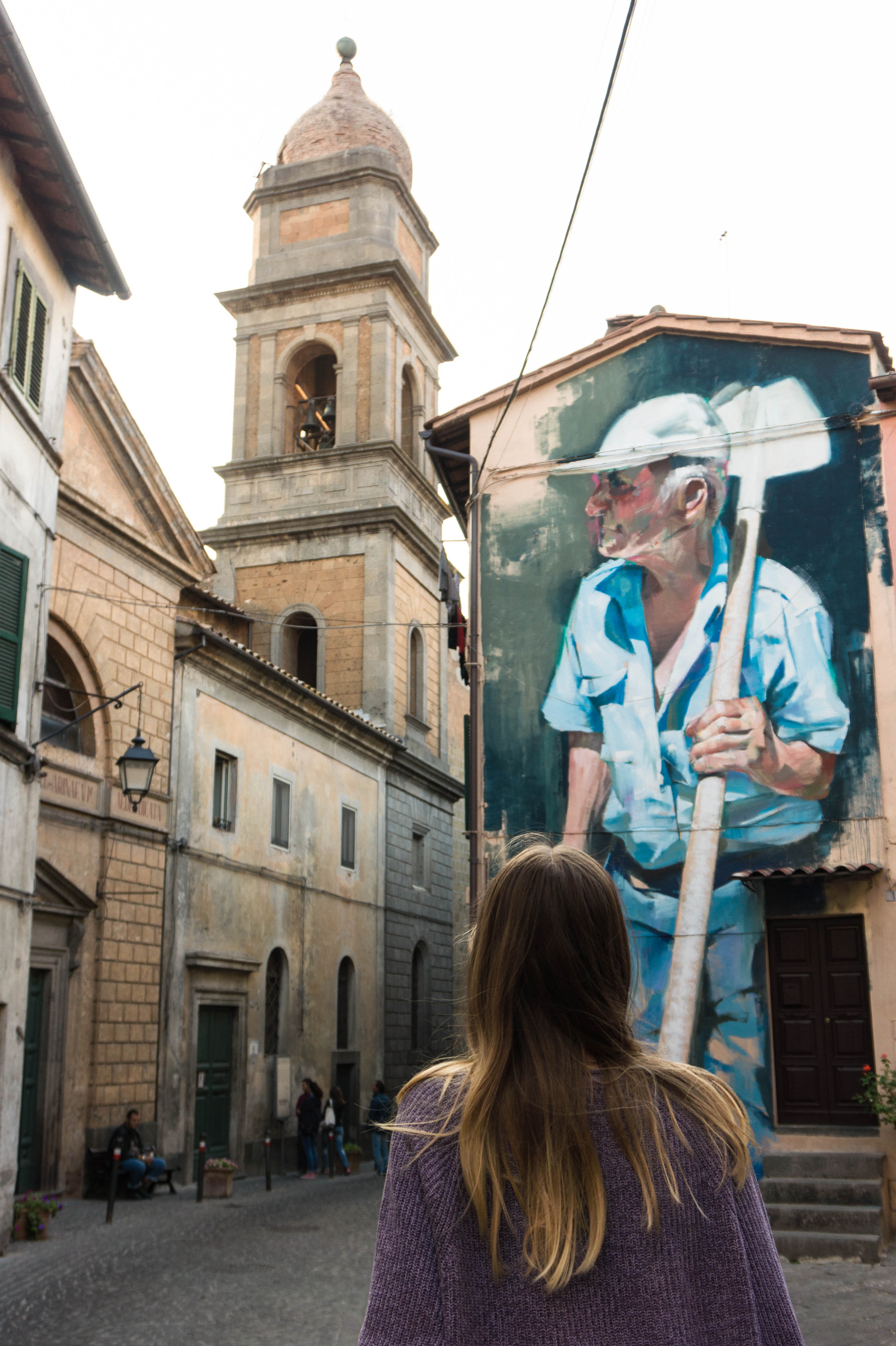
And said volcanic land became pretty obvious when we arrived at the quite fantastic Lake Bolsena. It’s huge (43km around, the largest volcanic lake in Europe), perfectly curved, and dotted with craggy islands. The whole area is evidence of the giant volcano that once stood there.
This might be our favourite part in all of Lazio – discovered on the first couple of days we arrived!
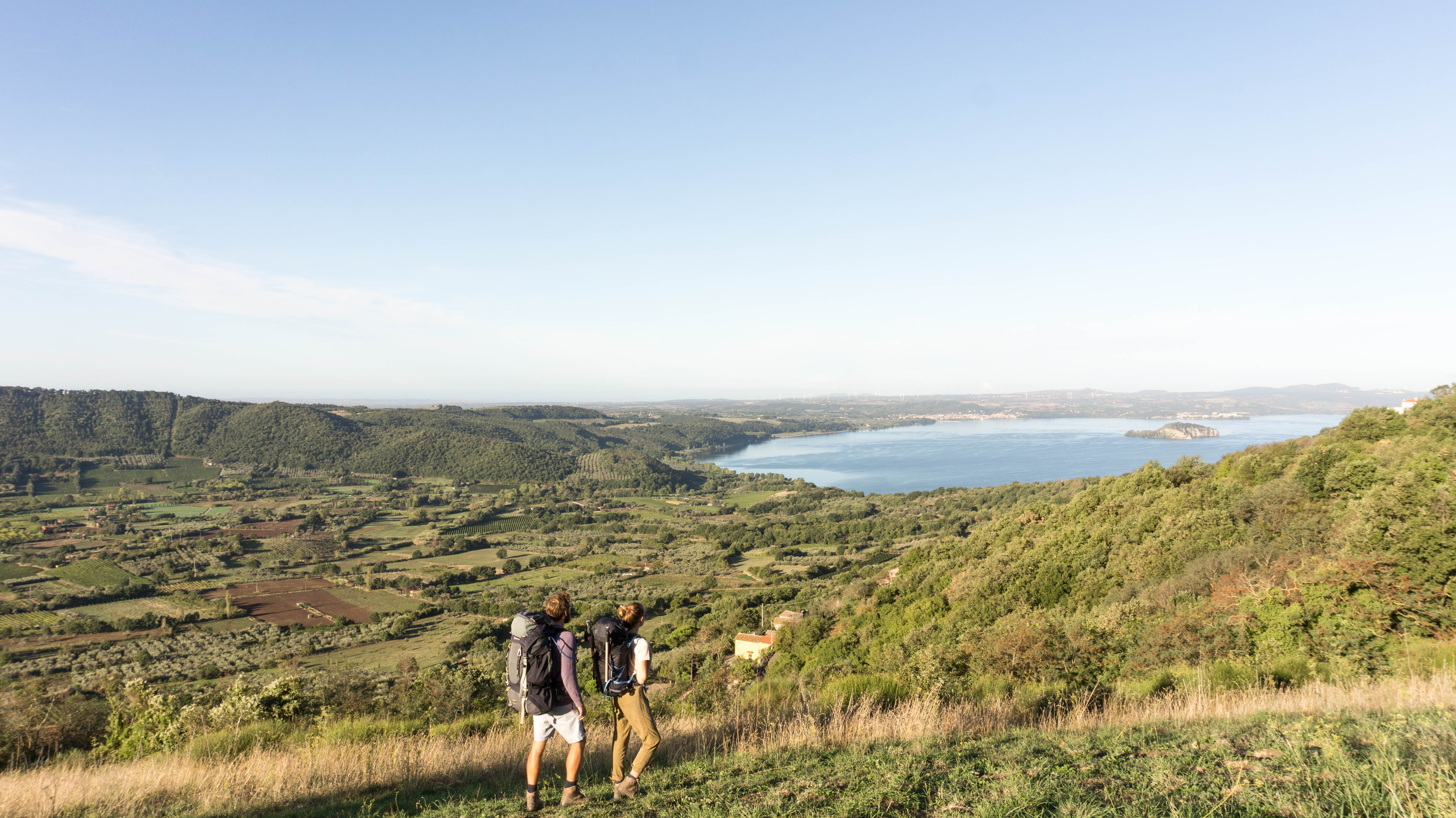
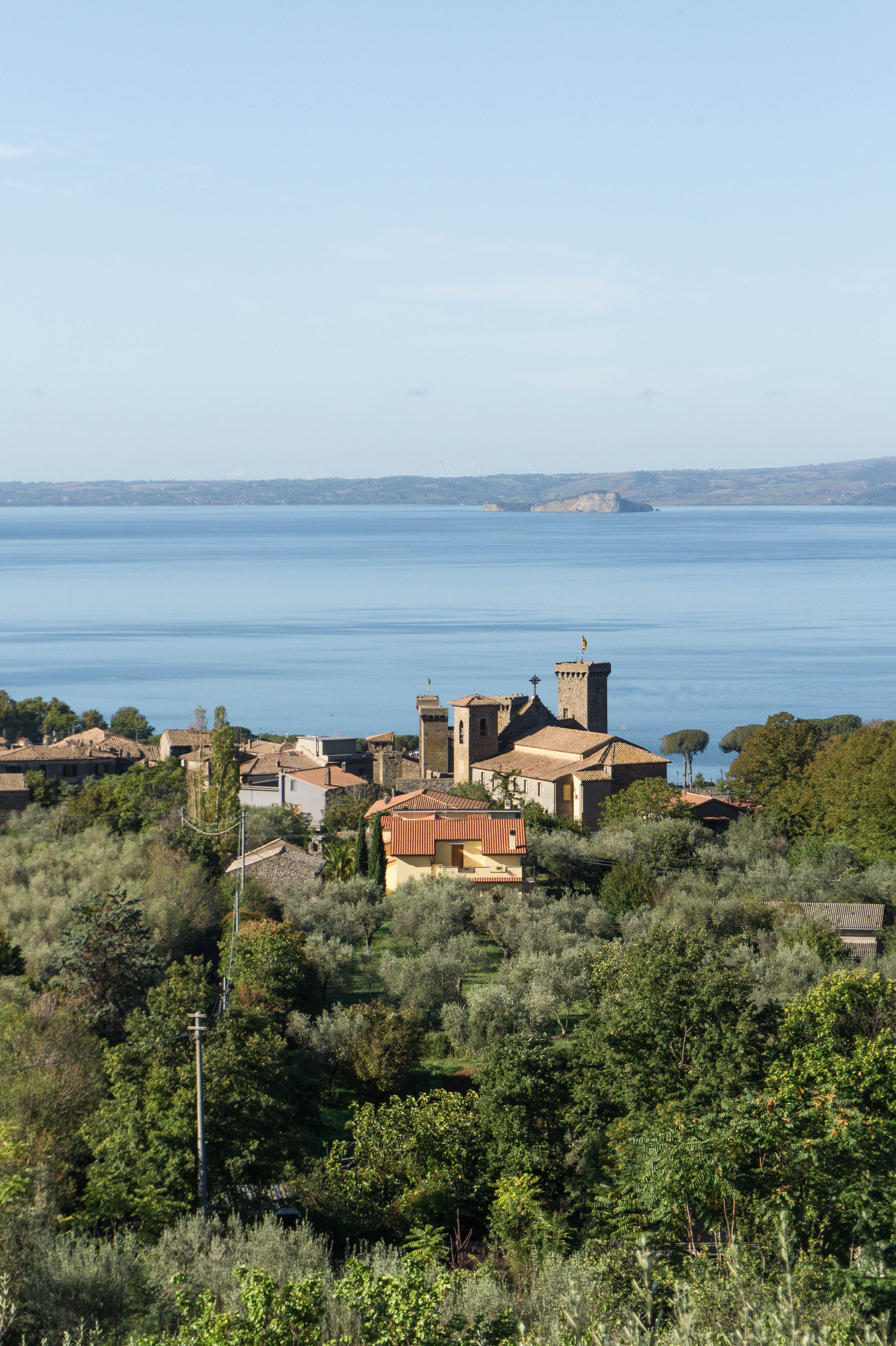
The town of Bolsena is gorgeous too, sitting on one side of the lake, climbing up the hill. It’s a famous religious site (of the Corpus Christi miracle), and seems split between the cheery lakeside leisure town and the old town above.
Really old in fact: originally Roman, Bolsena as you see it is now over 800 years old.
There’s something so satisfying about the ancient Via Francigena route guiding you straight down streets that are almost as ancient as the Via Francigena itself. Talk about immersive.
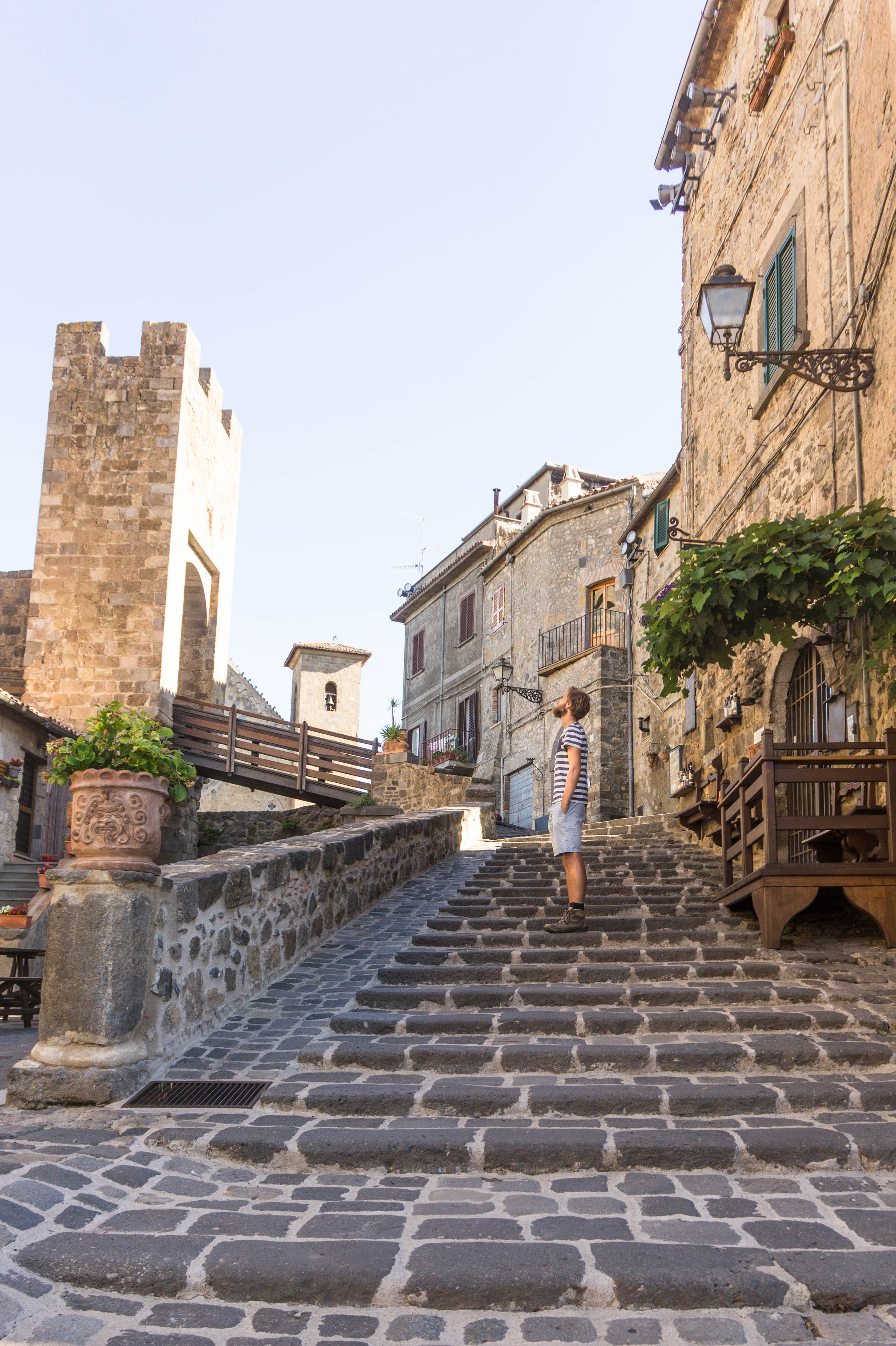
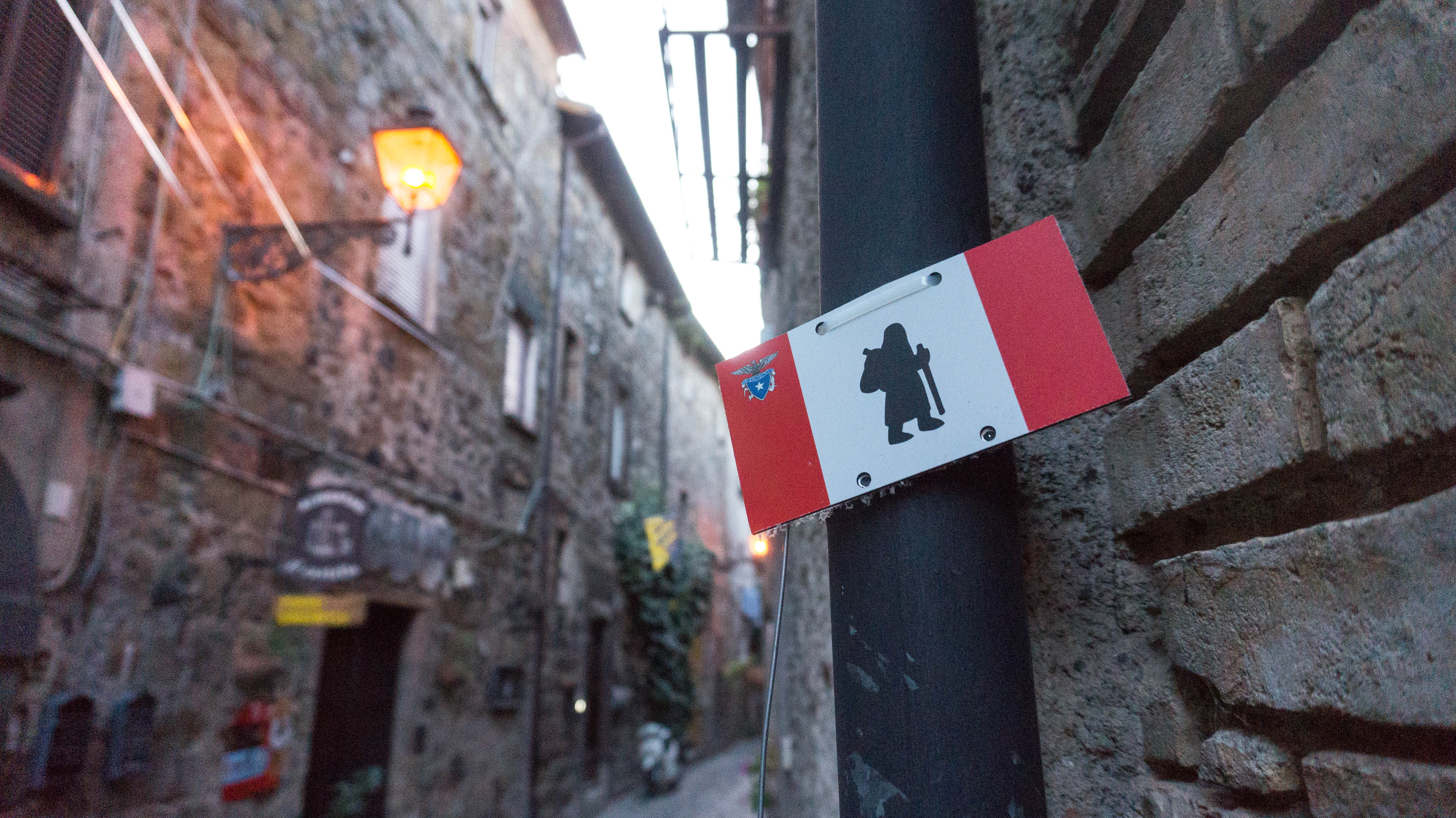
We stuck close to the lake, arriving at hilltop Montefiascone, and the official 100km point. Which, when you’ve already walked 1,970km of your apparent 1,900km walk, was kinda funny. It feels like discovering fifty pages beyond the end of a very long novel.
And we say ‘official’ but we saw two, three other ‘100km’ points along the way too – but let’s not spoil the moment, right?
Beyond and around Montefiascone we walked on an Actual Roman Road. We mean walking on the still intact cobbled stone that winds through the countryside, road that still makes up the official Via Francigena route today. Cool, eh?
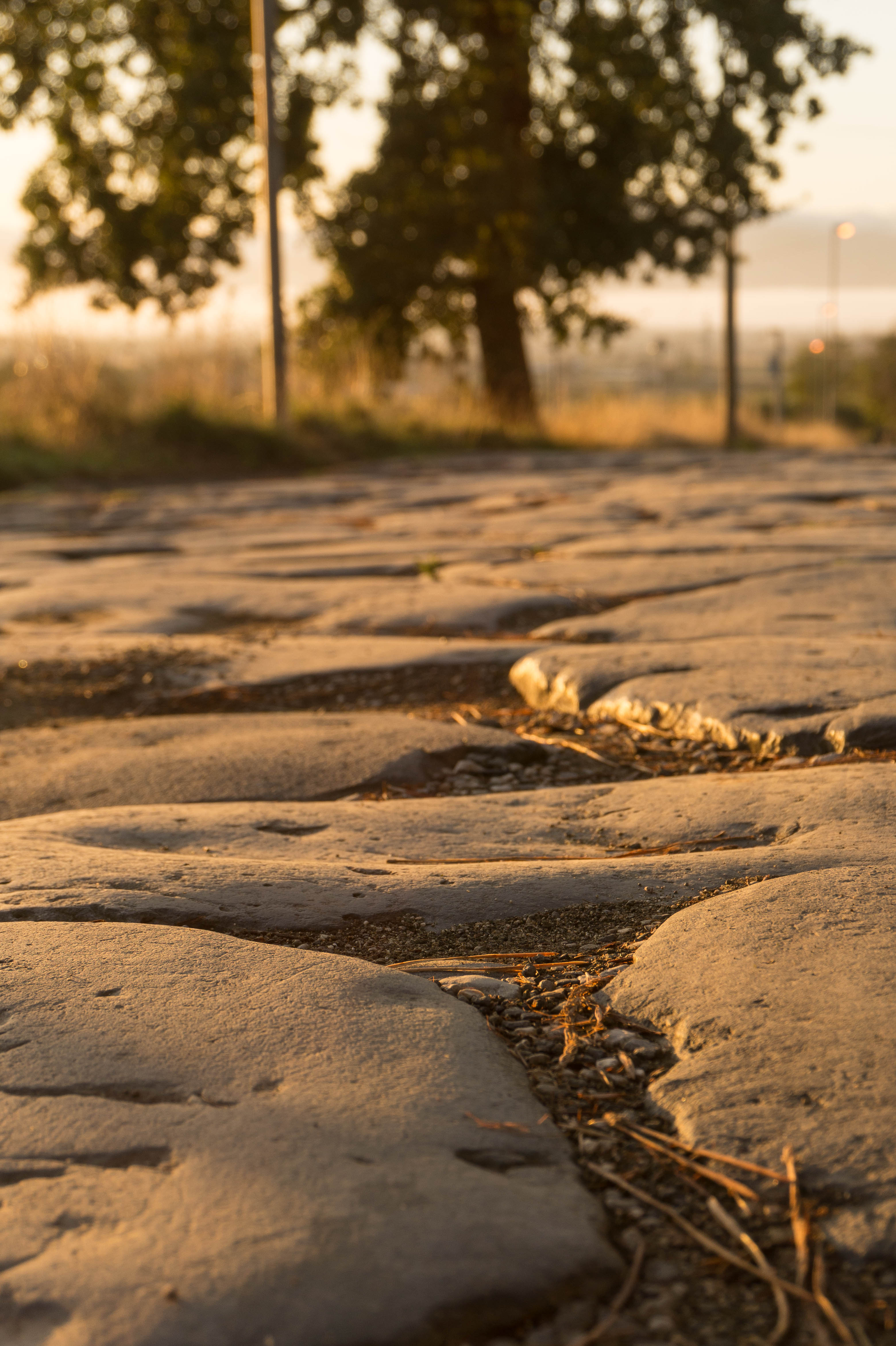
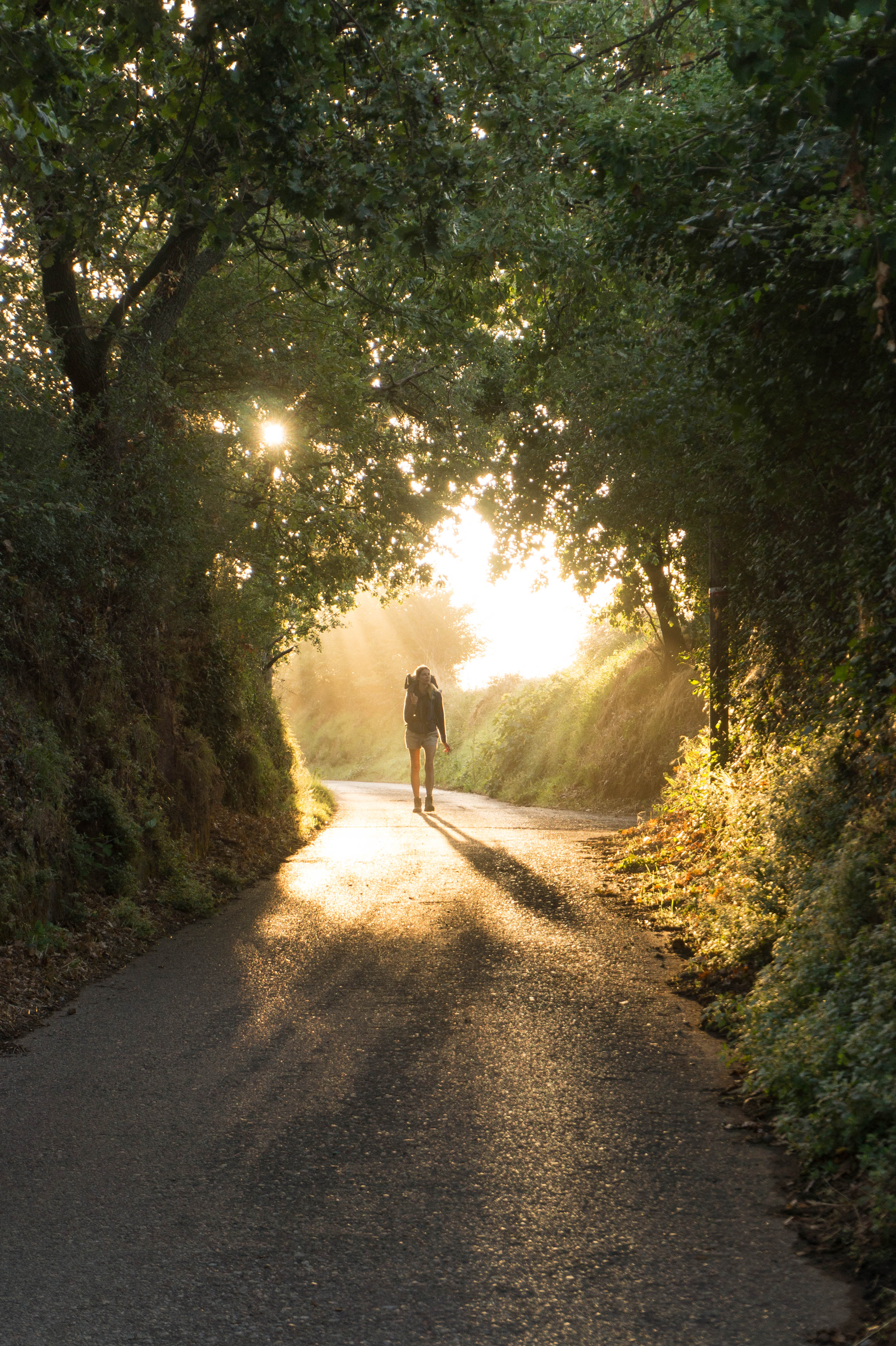
Any volcanic region worth its salt has thermal springs too, wouldn’t you say? And happily the Via Francigena runs directly past one. Il Bagnaccio is a natural thermal bath run wholly by volunteers. And for walkers it’s frankly unmissable.
For just a few euros entry, you can wallow in the steaming pools for as long as you like. Each of the five hot pools varies in temperature and really don’t smell bad (for a hot pool, that is – sulphur gonna be sulphur, guys).
Plus, if you get there at opening they’re deserted. We drifted blissful in a bath-warm pool in the middle of the countryside, staring up at the clear blue Lazio sky.
Just a few days away from arriving into Rome and finishing the Via Francigena, this is one of those stops we will remember forever.
Chilled and softened (have you read thermal baths do that?), we pressed on to Viterbo, an impossibly labyrinthine city. But we eventually stumbled out of it into acres of quiet hazelnut groves. We crossed straight through the trees, guided by the odd sign but wending through the leafy maze enjoyably lost.
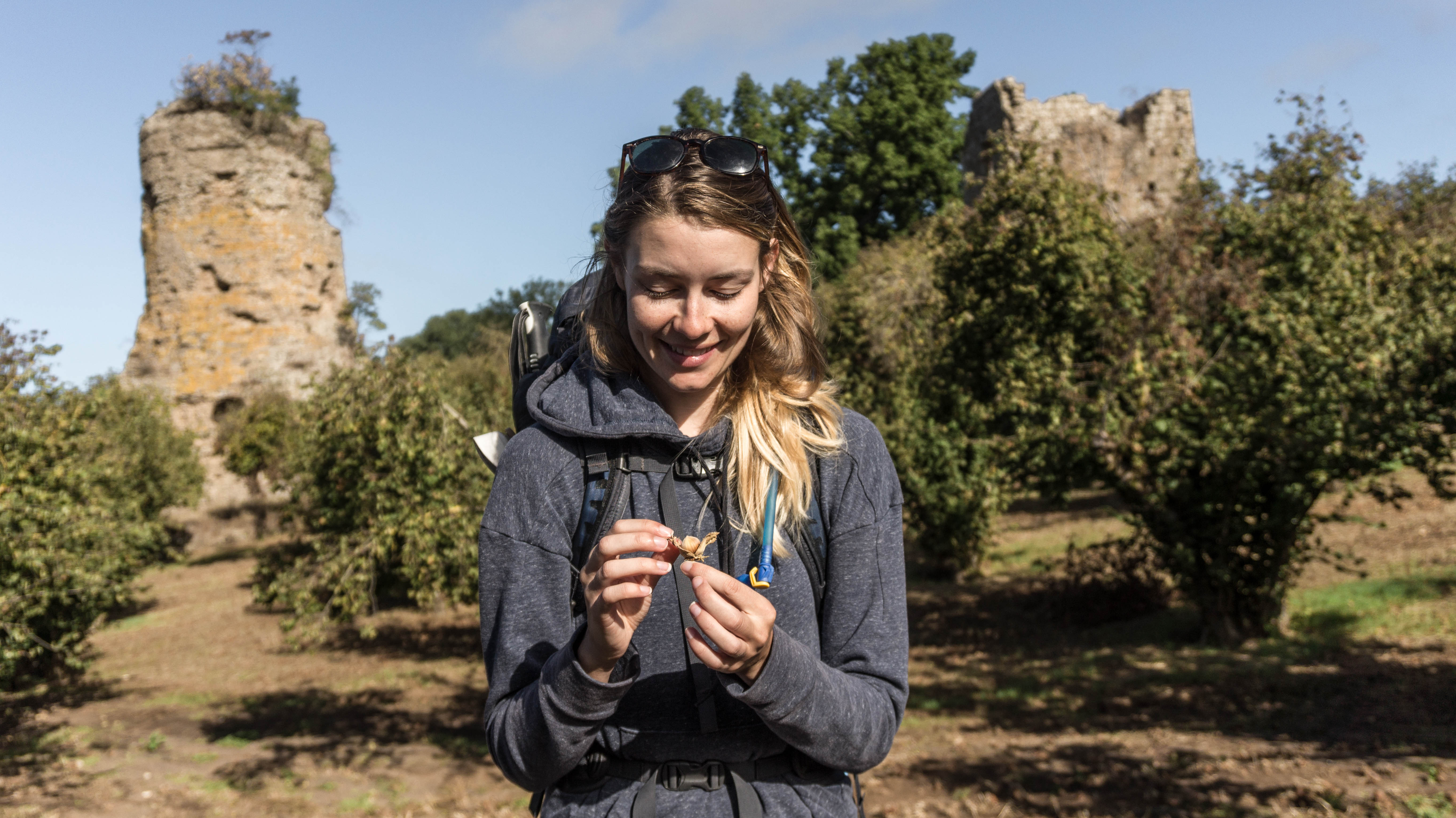
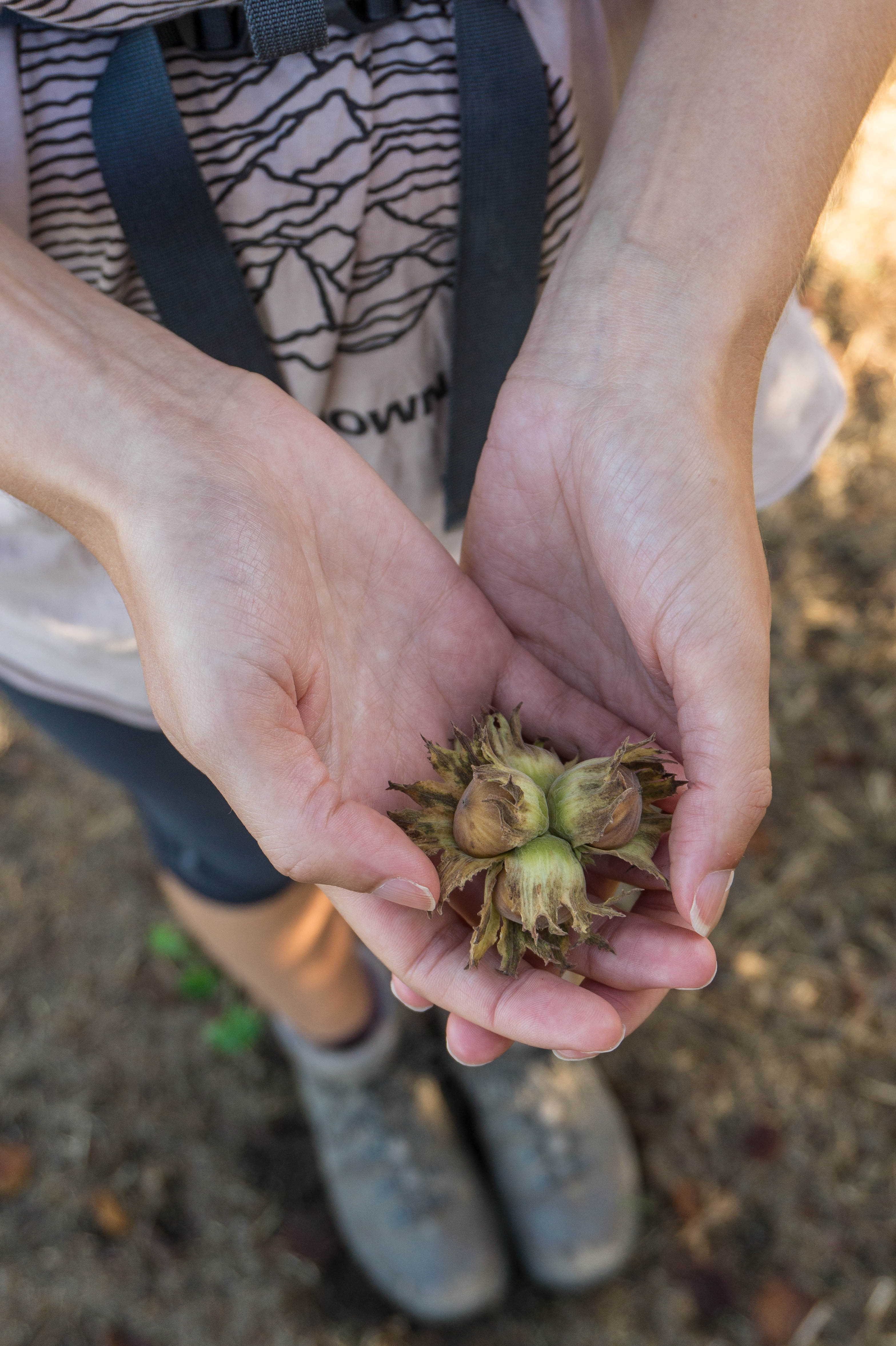
Aeroplanes streaked overhead, all hurtling to Rome, but the city couldn’t have felt further away. Not every day is beautiful on the Via Francigena, but this one was.
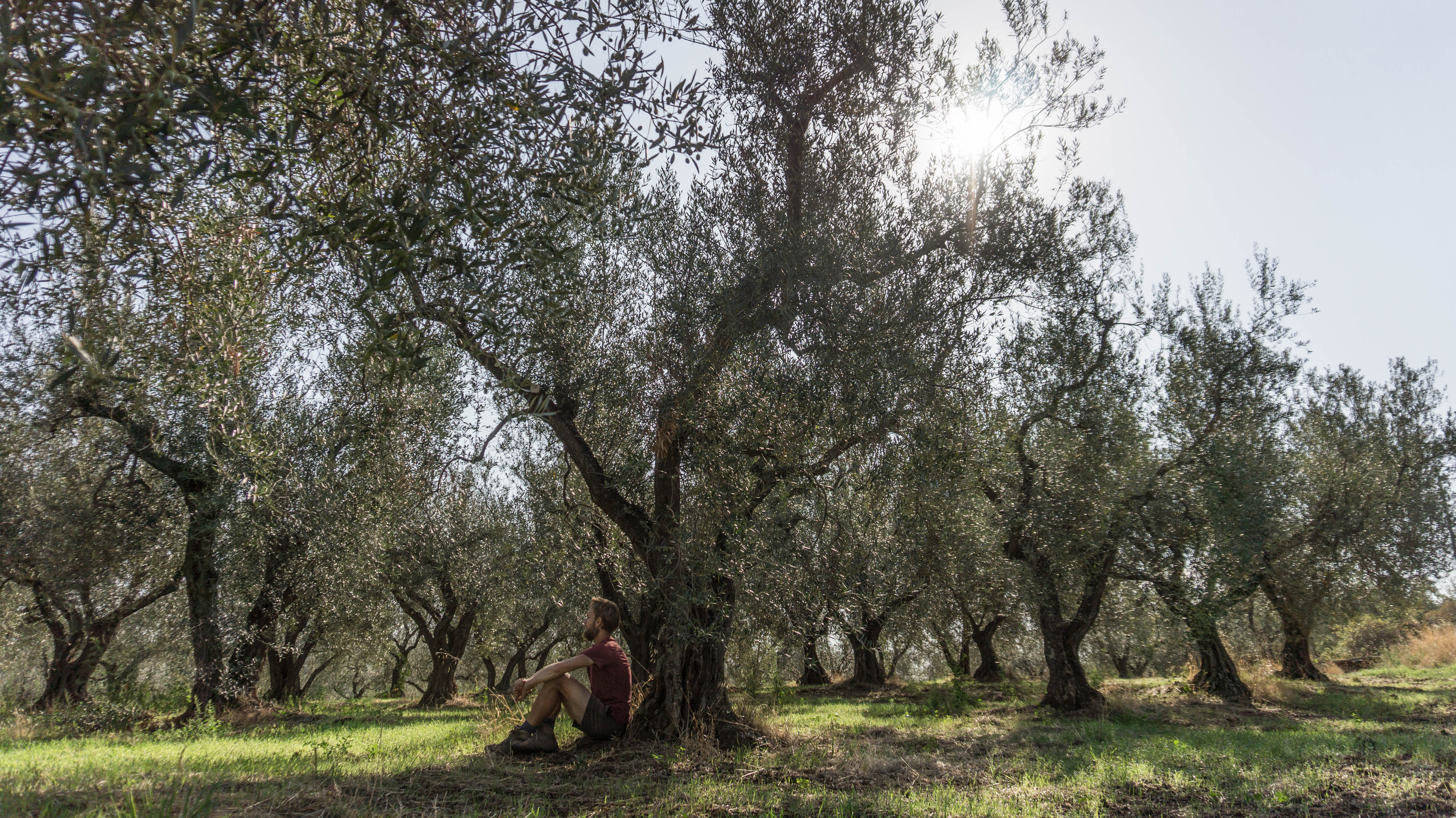
After the land-where-Nutella-grows is a jumble of villages and towns that all offer pilgrim accommodation of some kind. We stayed in Sutri, Campagnano di Roma and then La Storta which were all fine – Sutri being a favourite, staying in rooms owned by the local convent. Alternatively, you can stay in other little places along the way, like the lovely Capranica:
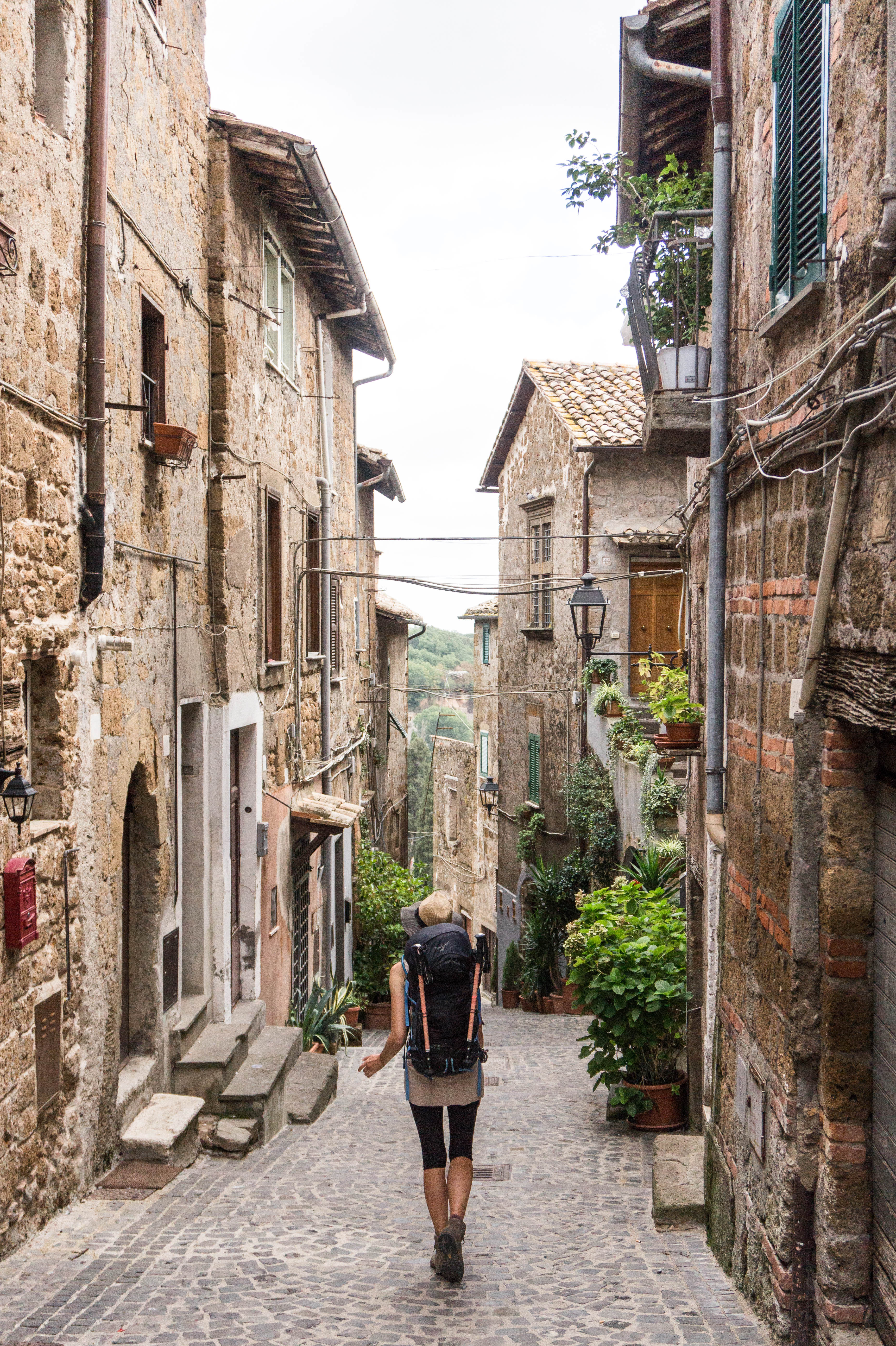
But on our penultimate day we walked through little Formello, and it was all-out enchanting. It had an amazing ostello for pilgrims, stuck up in a tower complete with winding staircase where each step carries the name of a stop of the Via Francigena.
That’s the whole of the Via Francigena: shoutout to Gy our last stop in France before Switzerland! Or Montreux where we walked through its world-famous jazz festival! Ha, can you tell we spent ages running up and down them?!
The mind boggles with all the memories of places you’ve seen and been when you’ve walked this far.
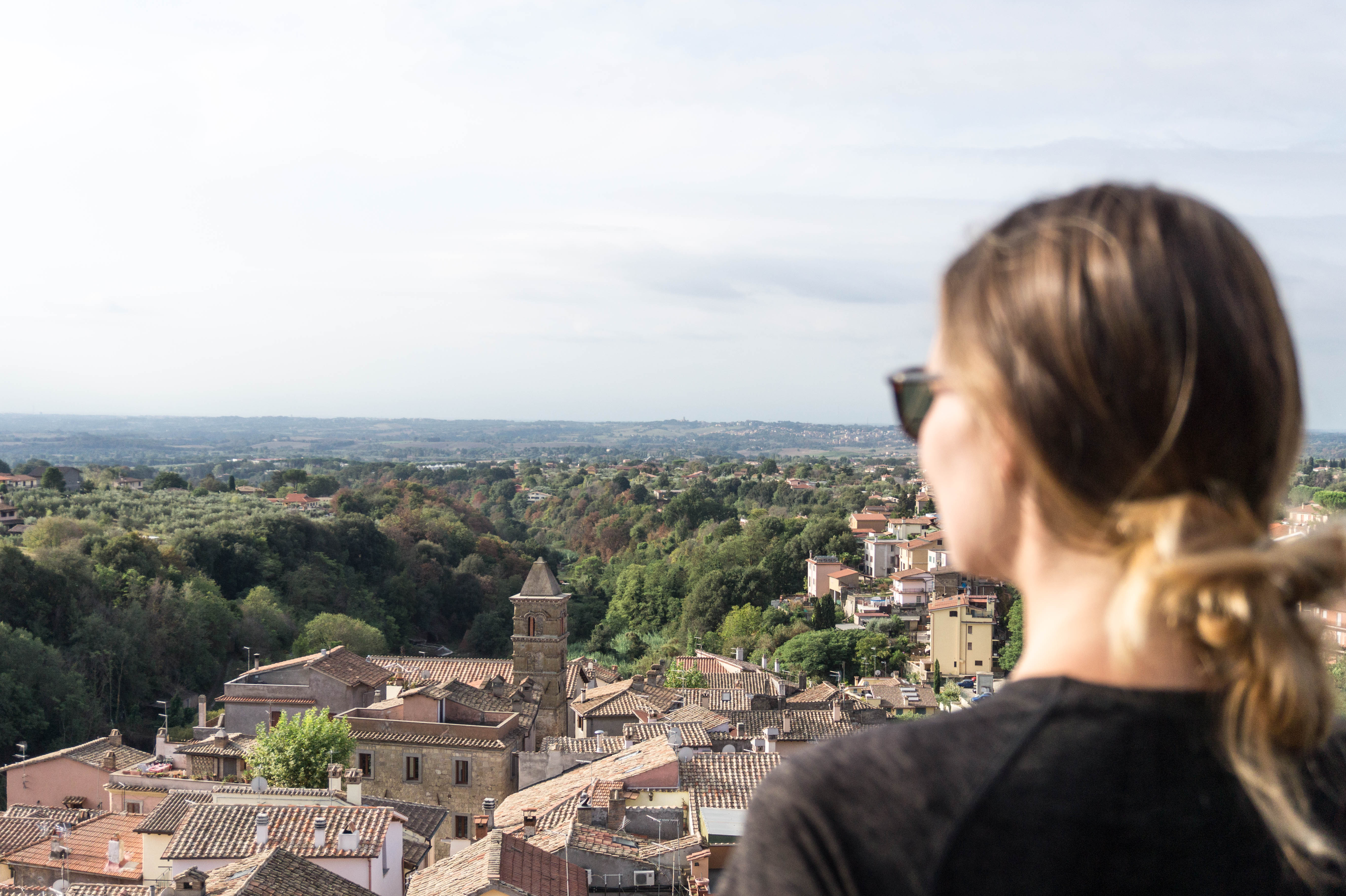
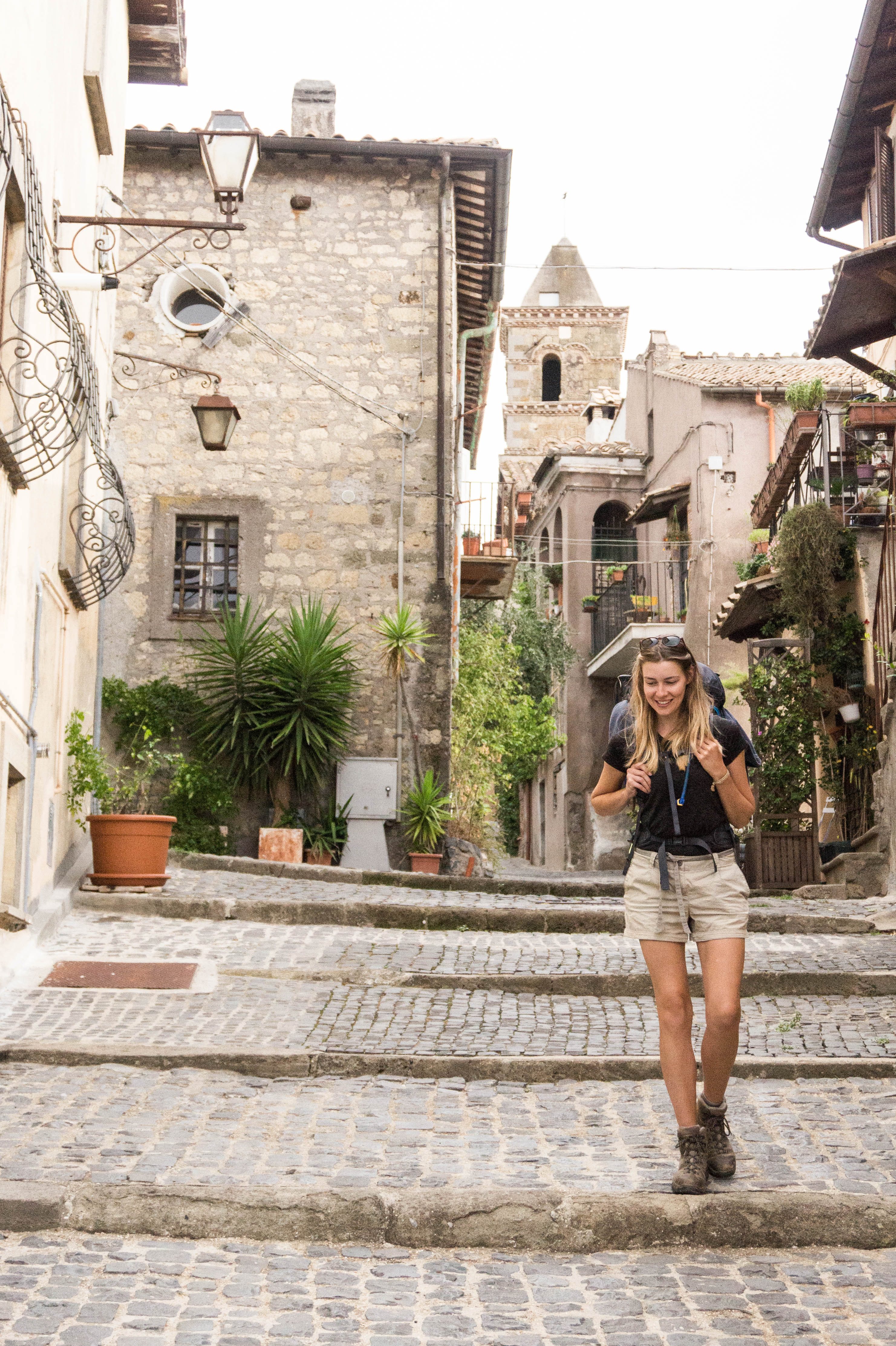
With hindsight, we would suggest that here would be a good place to stop before your final one or two days to Rome.
To Rome. Can you believe we’ve got here, after all the adventurings from Canterbury? It deserves a whole blog post on its own, don’t you think?

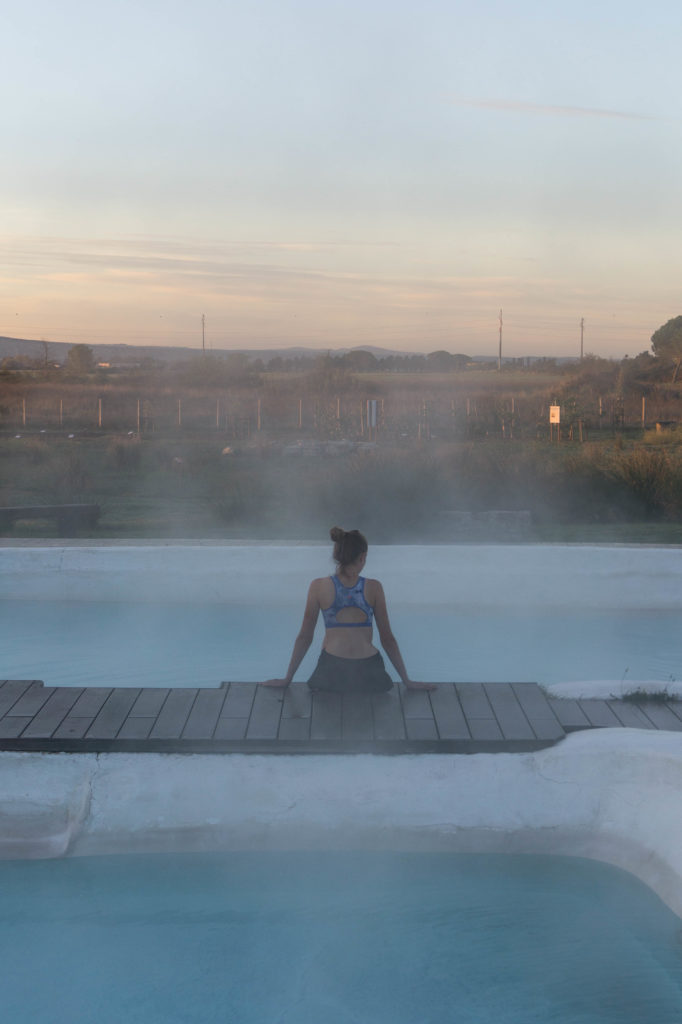
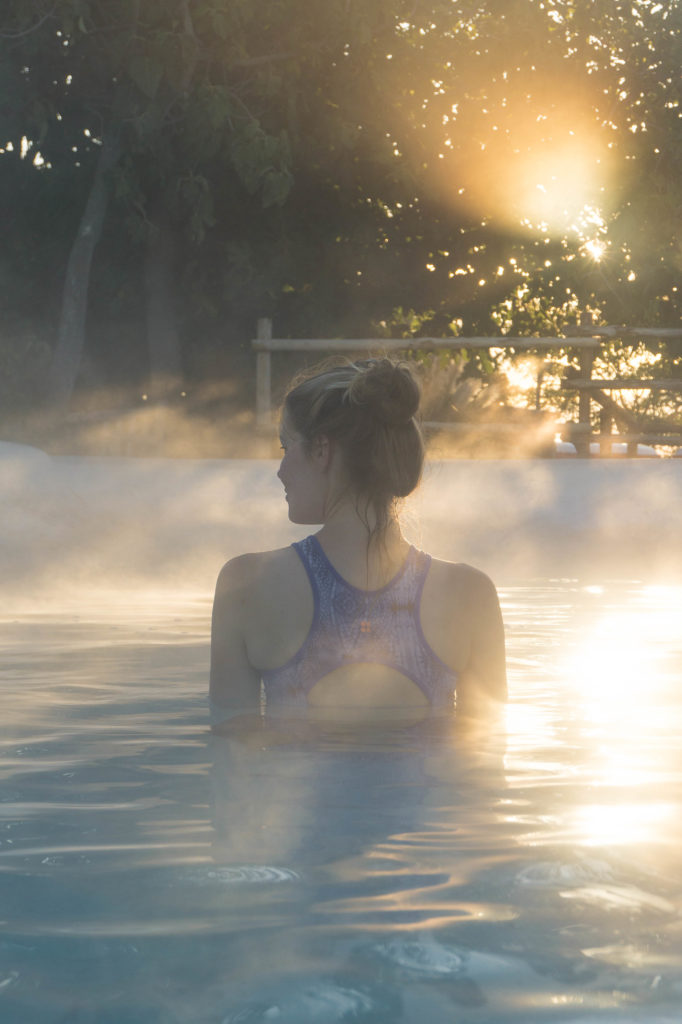
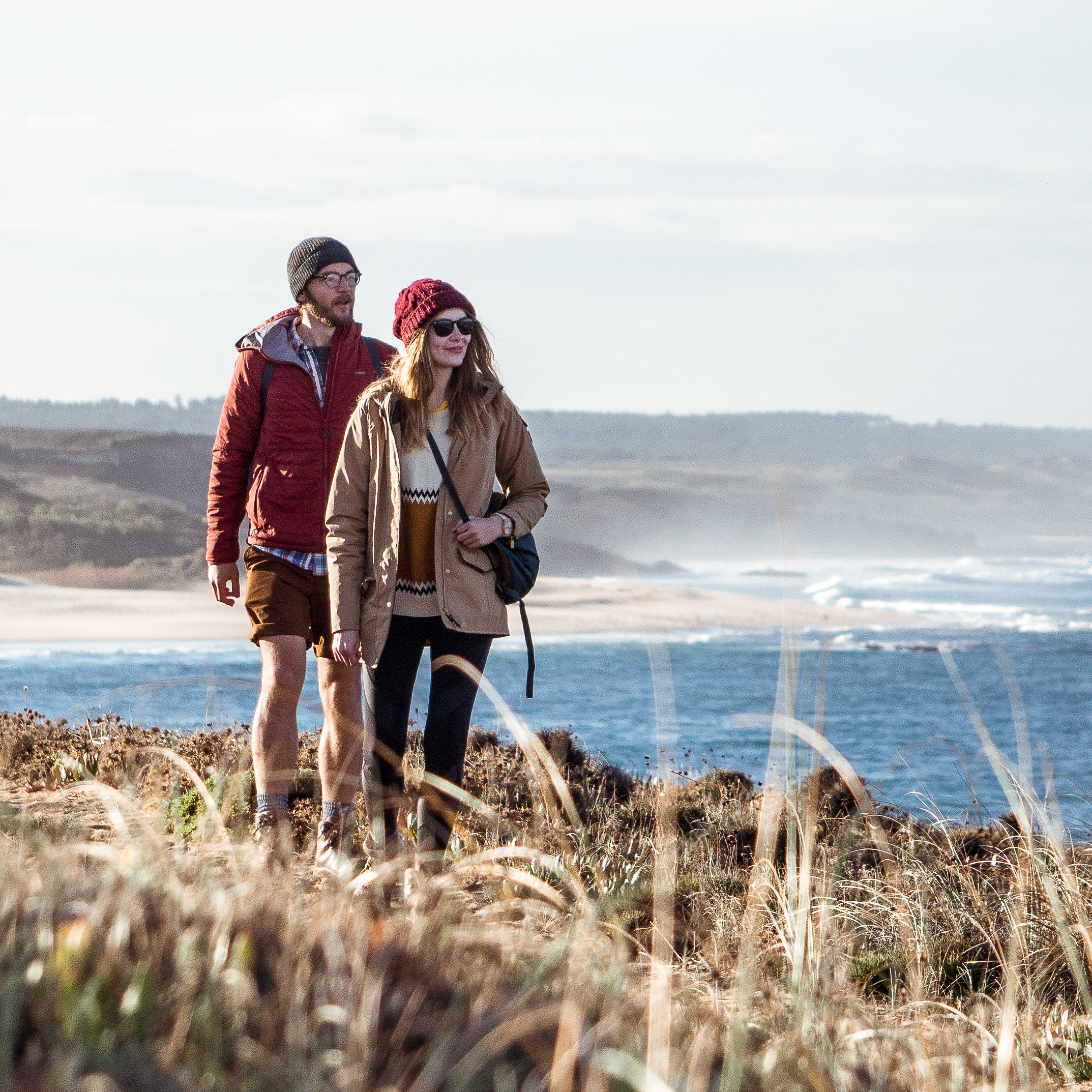
Certainly, ROAM on to Rome, also for the great benefit of your readers. Through your insight, descriptive impressions, and memories, your achievement will be a treasure to be enjoyed both by present followers, and for those of whom you will have given the encouragement to take up walking sections of this historically famous road. It is indeed, steeped in history and atmosphere as reflected in your reports. Readers, following even a few of your footsteps over the future years, will have undoubtably been inspired by your incredible experience and input! THANK YOU.
‘When in Rome’………..
Thank you Patricia and Christopher! We do hope people find some inspiration in the blog to get out on the Via or other paths, or just out walking, to enjoy travelling the old way, the slow way. It’s our favourite way to travel and we will continue to do so.
Hope you’re both well and getting ready for winter! Speak to you soon
Would you remember the names of stops of the Via Francigena you referred to:” It had an amazing ostello for pilgrims, stuck up in a tower complete with winding staircase where each step carries the name of a stop of the Via Francigena.”
Thanks!
Would you remember the name of the stops on the steps you referenced?
“But on our penultimate day we walked through little Formello, and it was all-out enchanting. It had an amazing ostello for pilgrims, stuck up in a tower complete with winding staircase where each step carries the name of a stop of the Via Francigena.”
Thank you
Hi Bob, do you want the stops and places we stayed for the Lazio section?
Thanks,
Luke
I was looking for the names of the 16 stops of the Via Francigena which are inscribed on the steps of the bell tower in Formello. Yours is the second reference to these steps I have read, and was thinking of building an itinerary around them (I hope I’m clearer this time!).
Thanks,
Bob
I’ll have a look at photos now…
Luke,
I was looking for the names of the stops on the Via Francigena that are inscribed on the steps of the bell tower in Formello, referenced in the blog.
Thanks,
Bob
Hi Bob, the stops are those made by Sigeric the Serious back in the 10th century. Will have a look for photos of the entire stairway, but don’t think we have all steps captured!
Cheers,
Luke
Afraid to say Bob that we have no photos of the steps!
Happy hunting 🙂
Luke
No worries, thanks for getting back!
Bob
Luke
A final question. Would you recall the name and or address of the ostello/bell tower in Formello?
Still hunting!
Thanks
Bob
Thank you both so much for such and enjoyable read. A few years ago I walked from Lucca to Rome but you have now inspired me to want to walk the whole way. Just curious regarding you photo equipment. What did you take with you and did you have a remote device to take some of your photos. The photos themselves are absolutely amazing.
What guides would you recommend to use on each leg.
Thank you once again
Kindest regards Helen
Hi Helen, sorry for the delay, we’ve been offline! Thank you for your kind comments. At the time we had a Sony a5000 and just a kit lens. We had a tripod that we played around with, and used the timer built into the camera. We got a little bit more advanced with subsequent trips, but not much to be honest. So glad we’ve inspired you to do a bit more of the walk. We used Cicerone and Lightfoot for England, France and Switzerland and then persisted with an Italian guide to practice our language skills in Italy!
Best wishes,
Luke